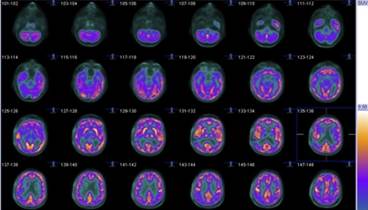A study shows that night owl sleep habits can cause a person to put on weight.
A new study done at the UC Berkeley’s Golden Bear Sleep and Mood Research Clinic, says going to bed late at night can lead to weight gain, according to an article on
news.berkeley.edu.
The study found a link between sleep and Body mass index (BMI), and the results are showing that teens and also adults that get to bed late during the week are probably going to put on more weight than those who have an earlier bedtime each night.
The researchers looked at the numbers from over 3,300 participants, youth and adult, and they discovered a gain of 2.1 pounds on the BMI for each hour of sleep lost over a five -year period.
Surprisingly, they found that the gain in BMI held true despite the participants regimen of exercise, TV or computer screen time or even the number of hours they slept overall.
BMI is calculated using the body’s height and weight and is a useful metric for measuring weight gain and obesity. A healthy BMI is said to be between 18.5 and 24.9. A BMI of 25.0 to 29.9 is considered overweight and 30.0 or greater is classified as obese.
The data the researchers used came from the National Longitudinal Study of Adolescent Health. That study has been recording the behaviors of teens from the United States since 1994. In the new study, they compared the BMI and the bedtimes for teens at the onset of puberty, during their college-age years and as young adults.
Lauren Asarnow, lead author of the study and a doctoral student in UC Berkeley’s Golden Bear Sleep and Mood Research Clinic said “These results highlight adolescent bedtimes, not just total sleep time, as a potential target for weight management during the transition to adulthood.”
She also added that young people that go to sleep earlier each night “set their weight on a healthier course as they emerge into adulthood.”
Earlier surveys and studies have revealed that teens do not get the recommended amount of sleep each night, and many teens report having difficulty staying alert and awake in school.
Later in life, the natural circadian rhythm shifts toward a later sleep cycle. The circadian rhythm is the natural body clock that regulates your metabolic and physiological functions.
Other studies have suggested a link between late night owls and mental health. It appears that people that are going to bed later have an increased risk of developing depression and other mental health related issues.
The hope is that the findings of the study will encourage young adults to be more conscious of the effect of late-night bedtimes, despite the pressure they will feel to be a part of their social group, particularly in a college-type setting.
Even if they are aware of the benefits of earlier sleep times, it will be difficult to maintain that type schedule while being a student.
Habits are hard to break as well. If teens are used to going to bed a 10 to 11 PM during high school years, they will have a hard time changing their cycle once they are out on their own. Parents who see the results of the study may want to monitor their children more closely and develop an earlier bedtime ritual at an early age to make it easier later on in life.
No teen wants to gain weight, especially around their peers in a university setting, and it is hoped that these findings will encourage teens and young adults to take their sleeping habits more seroiously.
The co-authors of the study include Allison Harvey at UC-Berkeley and Elanor McGlinchey at Columbia University, along with Ms. Asarnow, who is a researcher on UC-Berkeley’s Teen Sleep Study.
The Teen Sleep Study seeks to assist teens to reset the circadian rhythms of young people that are having trouble sleeping and waking up on time.
The results of the study were published in the October edition of the journal Sleep.






